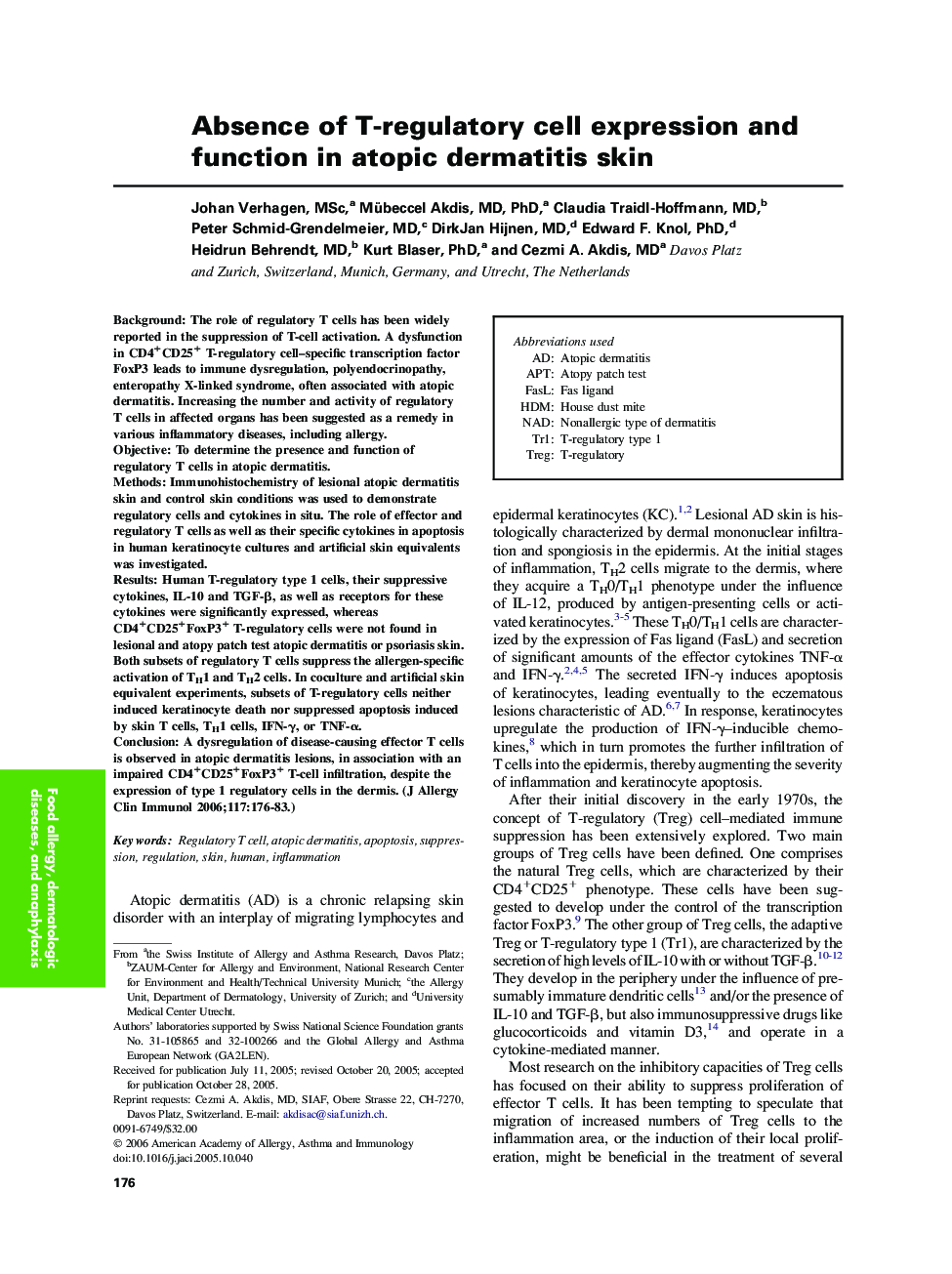| Article ID | Journal | Published Year | Pages | File Type |
|---|---|---|---|---|
| 3203854 | Journal of Allergy and Clinical Immunology | 2006 | 8 Pages |
BackgroundThe role of regulatory T cells has been widely reported in the suppression of T-cell activation. A dysfunction in CD4+CD25+ T-regulatory cell–specific transcription factor FoxP3 leads to immune dysregulation, polyendocrinopathy, enteropathy X-linked syndrome, often associated with atopic dermatitis. Increasing the number and activity of regulatory T cells in affected organs has been suggested as a remedy in various inflammatory diseases, including allergy.ObjectiveTo determine the presence and function of regulatory T cells in atopic dermatitis.MethodsImmunohistochemistry of lesional atopic dermatitis skin and control skin conditions was used to demonstrate regulatory cells and cytokines in situ. The role of effector and regulatory T cells as well as their specific cytokines in apoptosis in human keratinocyte cultures and artificial skin equivalents was investigated.ResultsHuman T-regulatory type 1 cells, their suppressive cytokines, IL-10 and TGF-β, as well as receptors for these cytokines were significantly expressed, whereas CD4+CD25+FoxP3+ T-regulatory cells were not found in lesional and atopy patch test atopic dermatitis or psoriasis skin. Both subsets of regulatory T cells suppress the allergen-specific activation of TH1 and TH2 cells. In coculture and artificial skin equivalent experiments, subsets of T-regulatory cells neither induced keratinocyte death nor suppressed apoptosis induced by skin T cells, TH1 cells, IFN-γ, or TNF-α.ConclusionA dysregulation of disease-causing effector T cells is observed in atopic dermatitis lesions, in association with an impaired CD4+CD25+FoxP3+ T-cell infiltration, despite the expression of type 1 regulatory cells in the dermis.
